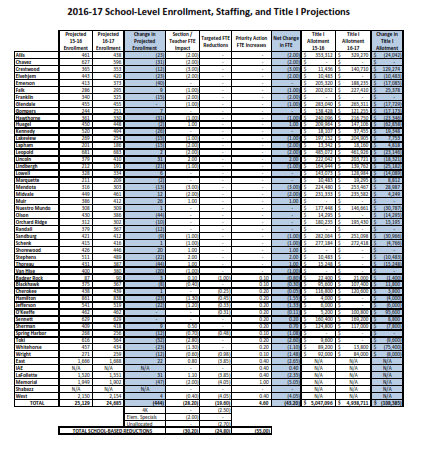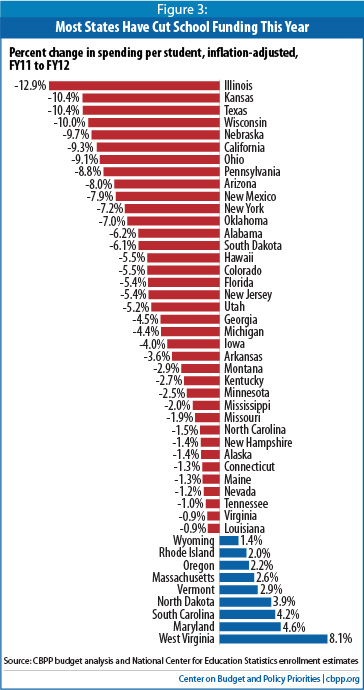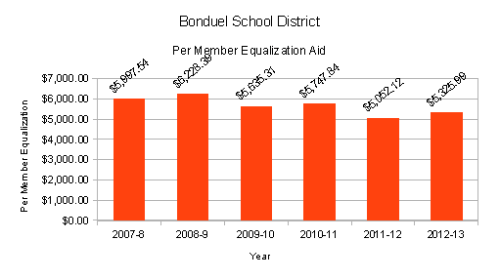“Money Talks,” Alex Chilton (click to listen or download)
Update:
The materials for Monday’s meetings (Budget Input and Operations Work Group)have been posted on BoardDocs. I’ll list and link here, but first there are some things that were not posted that need to be addressed.
A choice was made to exclude from the meeting materials all of the suggested cuts/funding sources that were part of the the Budget Amendments submitted by Board Members (at this time it is not clear who made that choice). The full Amendments are in the original post below.
This is unprecedented. It is absolute and basic that proposed amendments submitted in advance be included in the materials distributed to the public and Board Members. They must be part of the record, they will be part of discussion, and the public has a right to know what is on the table (especially in advance of a “public input meeting).
It should also be noted that those Board Amendments that are present in the meeting materials, are present only in summary form. My Amendments did not include extensive rationales, but Anna Moffit’s did, and to not share these with the public is wrong.
Additionally, the full Title I chart included in this post (below) is not posted, with only an explanation of the process provided. There is also no further information on Title III and tuition for Ell certification (listed in my Amendments as something I would “like to explore”).
An earlier Budget Presentation included the “Goal” of “Greater transparency in budget development.” The choices that have been made to not include Board Member Amendments take us further from that goal.
Here is what is there:
- PowerPoint, with (among other things) revised Health Insurance contribution proposal.
- Memo of Equity Charts.
- 2016-17 Proposed Budget Equity Charts.
- 2015-16 Equity Charts (for comparison).
- (Partial) Budget Amendments (from Board and Administration, with Administrative recommendations against all Board Amendments included).
- Three page response recommending against Intensive Support Team Amendment (as stated above, the rationale for the amendment is not posted).
- Expulsion Abeyance memo, with Budget information (revised expulsion process appears as a separate agenda item in the meeting materials here, here and here, and will be voted on June 27).
Starting next week, there are a few important meetings for the Madison Metropolitan School District Preliminary Budget (much budget info at the link, a bit more below). Here are the key meetings:
- Public Input on Proposed Budget, Monday, June 13, 5:15 PM, Doyle Blg, Rm 103.
- Operations Work Group Meeting, (Budget Discussion on the agenda), Monday, June 13, 6:00 PM, Doyle Blg, Rm 103.
- Regular Board of Education Meeting with public input, and votes on Amendments and Preliminary Budget, June 27, 6:00 PM, Doyle Blg, Auditorium.
If you can’t make these, you can always write the Board: board@madison.k12.wi.us.
A couple explanatory things at this point. First, detailed agendas and materials for these meetings will be posted on BoardDocs in advance, usually at some point on Friday for a Monday meeting. Second, the final Budget is not passed until October, after many things — especially the state aid certification — are set. Amendments and changes are possible up to that point, but the Preliminary Budget is what is in place when schools open in September, and for this and other reasons is important.
From my point of view there are three major places where there may be action: 1)Budget Amendments from Board Members (Anna Moffit and I both submitted amendments, more below); 2)Title I funding (Federal poverty aid, more below in the discussion of my amendments, with some linked documents and information previously not posted by MMSD); 3)The structure of employee health insurance contributions (because my spouse is employed by the district, I recuse myself on this). The latest on this is here (expect more before the meetings listed above).
May as well start with my Amendments. Here is what I submitted for consideration (I may or may not make motions on individual items).
Initial Budget Amendments
TJ Mertz
May 23,2016
I understand that in the current budget situation any additional spending must come from reallocations, but believe that it is counterproductive to match each proposed addition to a cut. Instead I have listed cuts and additions separately, with a final item on Title I and Title III.
Items to Be Cut
Eliminate Assistant Principals at Allis, Kennedy, Stephens and Cherokee.
Note: 4k at Allis may mean that numbers justify this position. [Note: My understanding is that traditionally an Assistant Principal is added when school population is above 500; these are all below. I asked about this at a meeting and did not get an answer.]
Cut Tech Plan Spending by $300,000.
The Baird projections show an initial $8.74 Million gap for 2017-18, and this assumes the continued $250/student categorical aid, and an additional $100/student. Under these circumstances I do not believe that increasing Tech Plan spending by $625,000 is sustainable.
Eliminate Special Assistant To the Superintendent for Special Projects.
Cut Employee Travel Conferences (0344) from $468,803.63 to $300,000.
Cut Space Rental Events/Meetings (0328) from $175,875.99 to $111,774.14.
The proposed budget includes an increase, this amendment returns the amount to that in the 2015-16 budget. The Badger Rock rental was moved to object 0329 and is not impacted.
Additions
I support Anna’s proposals on expanding Intensive Support Team staffing and targeting class size at “intensive touch” schools, (as well as the reallocations she proposes).
Add Board Research and Data NUP, $70,000
This position would work for the Board of Education and assist in fulfilling data requests, researching policies, and preparing analyses and briefs independent of administrative structures.
Strategic Framework Priority Area – Accountability.
Restore Middle School Staffing (to the extent possible)
According to the March OWG presentation, 12.000 FTE, budgeted at $1,181,679 will be cut from Middle Schools. Without the detailed information in the Equity Chart, it is impossible to know what these cuts might be, but I would like to explore restoring some or all. Many of our Middle Schools are struggling with a variety of issues, and I think we need to make sure they have the capacity to be successful.
Strategic Framework Priority Areas – Coherent Instruction, Thriving Workforce, (and perhaps Personalized Pathways and Family and Community Engagement).
Title I
I may be offering amendments addressing the Title I Reserved budget (funds not allocated to schools), the poverty measure(s) used to allocate Title I to schools, the formula used to determine the allocations to schools (my understanding is that we can allocate a higher dollar amount per student to schools at higher poverty levels, I don’t know if we are doing that, but would like to explore the possibility).
Title III
It is my understanding that that $300,000 three year budget for ELL certification tuition reimbursement appears to be much more than anticipated spending (Mike provided me with a summary). I believe this is Title III money, which means there are limits on how it might be reallocated. I would like to explore the possibilities, especially using some of this money to replace unrestricted funds, or to improve direct services for ELL students.
I would be glad to answer any questions about any of these, but am going to mostly forgo long explanations and justifications here (the bracketed note on the Assistant Principals was added as an explanation for this post). The two exceptions are Middle School Staffing and Title I.
On Middle School Staffing, just a couple of things. First, budget pressures and choices made in drafting the preliminary budget led to school-based cuts at all levels. At the Elementary level, there were two big factors. The first was decreased enrollments; the second was what might call a “relaxed” approach to class sizes in the early grades (Anna Moffit has an Amendment on this, below). The Middle School cuts were pretty much straight out budget based. At this point — less than a week before we have the penultimate meeting to discuss the Budget and less than a month before we vote — I don’t know how these cuts were decided (other than the phrase “Equity-based” has been used, whatever that means), nor what schools got what cuts. We have some info (below, and it may be out dated), but not much. This make it hard to do the job we were elected to do. I believe school based staffing allocations are at or near the top of budget issues and have been asking for information on the processes and results since at least February. I hope we get this in the “Equity Chart” this week, and if changes seem like a good idea, I hope it isn’t too late.

The “Equity Chart” should provide more detail and be more up-to-date. In reference to Anna Moffit’s second Amendment below, it is also worth noting that some of the Elementary School cuts do not seem to align with (projected) enrollment changes, this may be due to the interactions of grade level projections and desired class sizes (I have not looked closely, but will try, and would appreciate it if anyone else would like to make the effort, and share their findings). Depending on what I learn (and what else happens), I may or may not go ahead with an Amendment on Middle School staffing.
We do have new information on Title I since I offered the Amendments and it is good news. Some background, first. You can find everything you would want to know and more about Title I at the Department of Education page. Essentially, it Federal aid to schools serving students in poverty. It is also the biggest source of Federal money in k-12 education, so from a policy perspective, it gets used as a carrot and a stick. In fact there are all sorts of of controversies about how Title I will be distributed under the new Elementary and Secondary Education Act. Local districts have a number of choices to make with Title I. We decide (with some limits) how much is allocated to schools, and how much is “reserved” for district initiatives (see here for information on MMSD “Reservations”). We decide what measure or measures of poverty will be used to distribute funds to schools. We decide (with limits) what the poverty percentage cut-off will be for designating a school Title I. We decide what levels — Elementary, Middle, High — we will fund via Title I. We decide how we will allocate to schools on a per qualifying student basis (do we give higher poverty schools more per student)? All these decisions and more. In Madison four things have brought Title I to the fore. First, in 2014-15 MMSD expanded Title I to Middle Schools. Second, because some Madison schools are participating in the Community Eligibility Provision (CEP) which provides free meals to all students, the traditional Free/Reduced Lunch poverty measures have been impacted (see here for much much more on Title I and CEP, including analyses of some of the decisions listed above, worth a read). In response, MMSD, like many districts is using what is called “Direct Certification,” a method that matches students to family enrollments in other government aid programs to arrive at student poverty numbers. Third, for the first time since the 2008 referendum MMSD does not have unused revenue authority, this budget is especially tight. Last — and this is the good news — recent reallocations show MMSD receiving $788,000 in additional Title I funding. The initial Title I allocations (similar to the above chart) showed many schools with funding cuts (often on top of other staffing cuts). With the $788,000 this has changed. See here:
You can see almost all schools received an increase, and that the schools are tiered, with higher poverty k-5 schools getting more per student, and Middle Schools getting a flat (and low) $750 per student. More on the process MMSD used here.
But questions remain. Is direct certification the best way to estimate poverty? Are the tiers, the cut points, and the differences per student between them the right things to do? Is the Middle School/Elementary difference good policy (remember k-5 schools also have SAGE (now AGP) for the early grades)? I am not committed to any changes from the proposed allocation, but I do want to think about these questions, hear from the community, and discuss the choices with other Board Members.
Here are Anna Moffit’s Amendments. As stated above, I support them. I am not going to say more at this time, Anna Moffit has already published a strong op ed on the first, and I am sure she will be equally eloquent on the other at the appropriate time.
Budget Amendment
Increase the Intensive Support Team staff by 3.5 FTE (1 FTE for the Autism /Significant Developmental Delay team/ 2 FTE for the behavioral health team and .50 for a clerical assistant).Rationale:
Based on community feedback and staff input there is an increased need to support our students with intensive behavioral and mental health needs. According to anecdotal information and district data there are a small number of students that are currently receiving a disproportionate amount of behavioral referrals (about 1% of our students make up 95% of behavioral referrals). Many of these students have documented or undocumented diagnoses, learning difference or a trauma history that require an acute and elevated levels of support in order to be successful in our schools.
Rather than restrict eligibility criteria that create more barriers for students to accesss specialized services, we should be proactive and prevent escalating disciplinary measures that lead to exclusionary practices by increasing our capacity to serve more students in a timely matter. By investing in programs that prevent suspension and expulsion, hundreds of thousands of dollars can be saved for our district.
Building the capacity at the district level to provide immediate help and ongoing professional development to non-Student Services staff via our Intensive Support Team is more cost effective in comparison to paying for expensive, outside consulting services and trainings. Based on staff feedback, there is an increased need for professional development in the area of working with students that have intensive mental health and behavioral challenges in our district.
Currently, the Intensive Support Team doesn’t have the capacity to organize, schedule and provide professional development in an efficient and effective manner due to limited capacity. By providing additional team members and a clerical position, scheduling professional development during educators’ planning time would be more consistent across the district. This increase would also of-set some of the the cuts made in the previous year to Students Services staff (21 Student Services staff).Possible funding streams:
BEP professional development:
Based on anecdotal data from one-on-ones with staff and Board presentations,
opportunities for professional development have been limited and difficult to attend due to other commitments, not due to lack of interest or need. There was no additional information provided to the Board that would support lack of interest or need as the basis for not utilizing professional development funding. In fact, Behavior Education Plan surveys continue to indicate their is a high interest in increased professional development in order to meet the diverse and dynamic needs of our student body.Access to bilingual education:
The district will not be expanding the DLI program to all schools put forth in the ELL plan which should lead to a decrease in FTE by .50 for an additional DLI planner. This would provide about $43,755 dollars in additional funds. There are very few students and families (currently 4 families based on feedback from Principal) that have shown interest at Thoreau Elementary in the DLI program at a to-be-determined school, therefore $36,000 dollars appears to be an excessive amount of money set aside for transportation costs for busing. In total, there would be about $70,000 dollars in additional funds.
Other possible funding sources:
TID 25 loan
Reduce spending on Technology Plan
Reduce spending on Educational Resource Officers
Utilize funds saved from not filling the position of Special Assistant to the Superintendent ($125,000 dollars).
Provide additional FTEs to all of our “intensive touch” elementary schools in order
to ensure that all K-2 classrooms can begin the year 16 students in each classroom. The funding source is undetermined at this time due to lack of information in regard to Employee Premium Compensation limits for district staff members, as well as resolution in regard to TIF 25.Rationale:
Based on extensive research, class size has the most significant impact on student achievement in the early childhood years. Smaller class sizes have shown to have a greater impact on academic achievement than aligned curriculum, as well as instructional coaching. Smaller class sizes also ensure that students and teachers have the time to develop strong, positive and reciprocal relationships which lay the foundation in developing a child’s resiliency. Resiliency has been shown to counter-act the effects of Childhood Trauma that is a direct result from children experiencing toxic stress at home, school and community. Students that experience chronic toxic stress are more likely to develop learning disabilities, maladaptive behaviors, as well as an increased risk of substance abuse issues and mental health challenges.
Although Governor Walker has provided district a “tool” called AGR to increase class sizes for our most vulnerable students, I believe that it has a detrimental effect on student learning for our youngest learners. With large numbers of black students, students receiving Free and Reduced Lunch, English Language Learners and students with disabilities not reaching adequate reading and math outcomes, leading to huge disparities, it is critical to invest our resources in high leverage strategies that can close these gaps.
Lower class sizes has also been a priority identified within our budget feedback from schools and the community.
There may be other ideas that lead to late amendments, or revisions of these. Please remember, these are our schools, our children, and the School Board Members are your representatives; be part of “the village” by participating, making your voice heard at (or prior to) the meetings listed at the top. I’ll be listening, and others will too.
Thomas J. (TJ) Mertz















